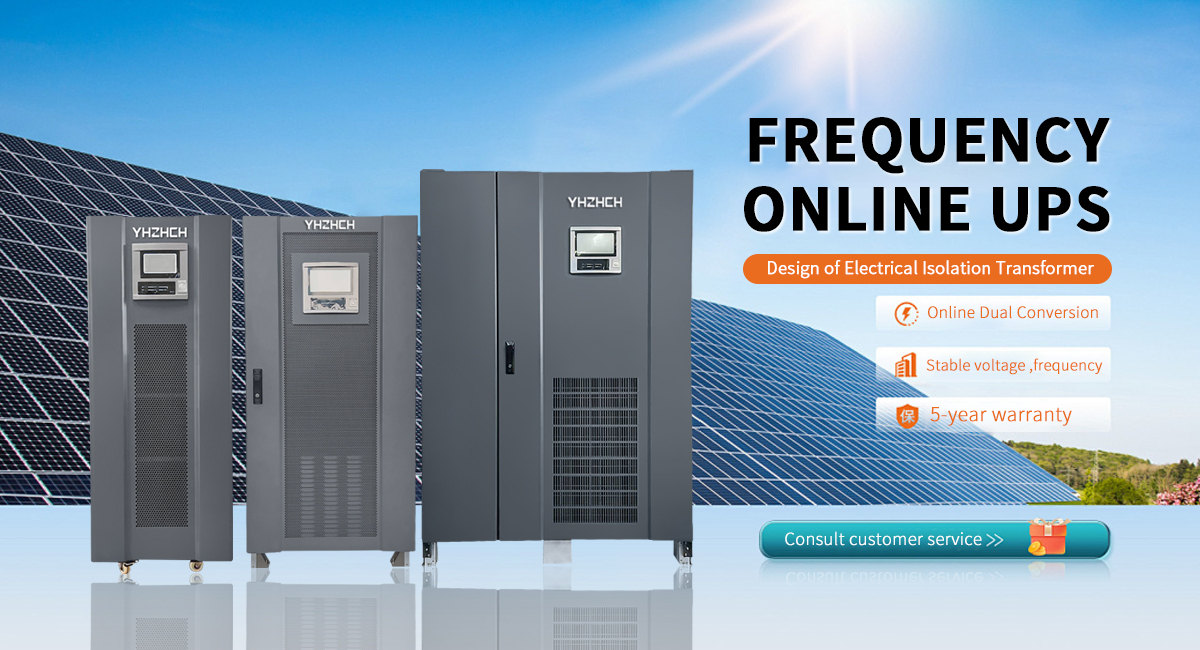
The core feature of high-power power frequency UPS is the built-in power frequency transformer, which gives it unique advantages in stability and adaptability, but also brings limitations in size, efficiency, and other aspects. To clarify the differences between the two, it is necessary to start from the structural roots and analyze their differences in performance, applicable scenarios, and other aspects.
1、 What are the "hardcore" advantages of high-power power frequency UPS?
Super strong impact resistance and overload capacity
The existence of power frequency transformers enables them to withstand greater instantaneous overloads (usually up to 150%~200% of rated load, lasting for 10~60 seconds), and has stronger compatibility with inductive loads such as motors and water pumps, or equipment with impact starting (such as elevators and machine tools), making it less likely to shut down due to load fluctuations.
Excellent electrical isolation and anti-interference performance
Power frequency transformers can achieve electrical isolation between input and output, effectively blocking common mode interference, surges, and harmonics in the power grid from affecting the load, while preventing faults on the load side from being fed back to the power grid. They are particularly suitable for scenarios that are sensitive to power supply quality, such as medical equipment and precision instrument laboratories.
Adapt to harsh power grid environments
For environments with large voltage fluctuations (such as remote power grids), frequent power outages, or sudden voltage fluctuations, power frequency UPS has a wider voltage regulation range (usually allowing input voltage fluctuations of ± 20% to ± 30%), and has higher reliability in switching to battery power supply after mains power interruption, reducing the risk of power interruption during switching moments.
Long lifespan and convenient maintenance
The lifespan of the core component, the power frequency transformer, can reach 15-20 years, far exceeding the lifespan of high-frequency inductors in high-frequency UPS (8-12 years); And its circuit structure is relatively simple, with fewer fault points, and the compatibility of replacing components during later maintenance is stronger, especially in high-power ranges (such as above 200KVA), where the maintenance cost advantage is more obvious.
2、 The 'shortcomings' of high-power power frequency UPS cannot be ignored
Large volume and heavy weight
The volume and weight ratio of power frequency transformers are extremely high. Taking the 100KVA model as an example, the weight of power frequency UPS is usually 2-3 times that of high-frequency UPS. When installing, it requires more spacious space and has higher requirements for ground load-bearing, which is not suitable for space tight scenarios (such as small data centers).
Relatively low efficiency
Under full load conditions, the efficiency of power frequency UPS is about 92%~94%, while high-frequency UPS can reach 94%~96%; When the load is light (such as 30% load), the efficiency difference of power frequency UPS is more significant (about 85%~90% vs high frequency 90%~93%), and long-term operation will increase power loss and heat dissipation costs.
High energy consumption and heat dissipation requirements
Due to lower efficiency, power frequency UPS generates more heat during operation, requiring a more powerful cooling system (such as multiple fans, independent air conditioning), which not only increases initial investment but also increases operating noise (higher fan speed).
High cost
The material (copper, iron) and manufacturing process costs of power frequency transformers are higher. Under the same power, the procurement cost of power frequency UPS is 15%~30% higher than that of high-frequency UPS. In the low and medium power range (such as 10-100KVA), the cost-effectiveness disadvantage is more prominent.
3、 Summary: Choose power frequency or high frequency? Watch the scene and "sit in the right place"
The advantages of high-power power frequency UPS are concentrated in stability, anti-interference, and adaptability to harsh environments, but its disadvantages in size, efficiency, and cost are also obvious. When choosing, priority should be given to load type (whether there are inductive/impact loads), grid quality (whether there are large fluctuations), spatial conditions (whether large volume installations are allowed), and long-term operating costs (efficiency and energy consumption).
In short, if you need to provide guarantees for industrial equipment, medical instruments, and other scenarios that require extremely high power supply reliability, and can accept high initial investment and space occupation, power frequency UPS is a more reliable choice; If pursuing efficiency, compactness, low cost, and relatively stable load (such as server clusters), high-frequency UPS has more advantages.
Core conclusion: High power frequency UPS is a choice with "stability" as the top priority, suitable for heavy industry, medical and other scenarios that require strict requirements for power supply continuity and anti-interference. However, the compromise between volume, efficiency and cost needs to be planned in advance.


